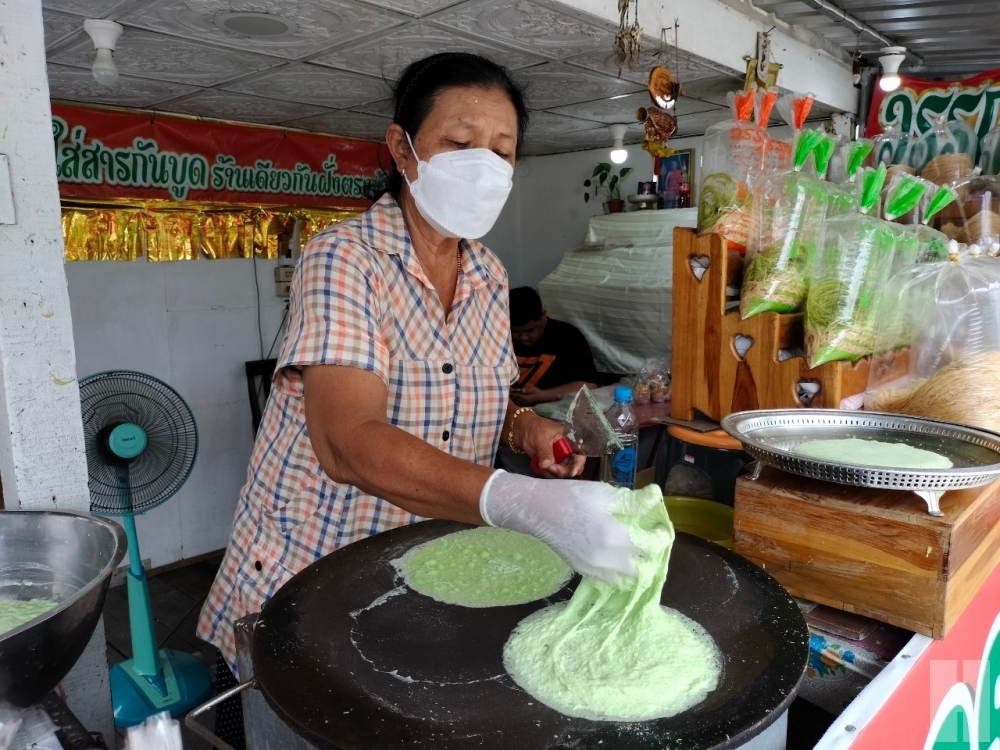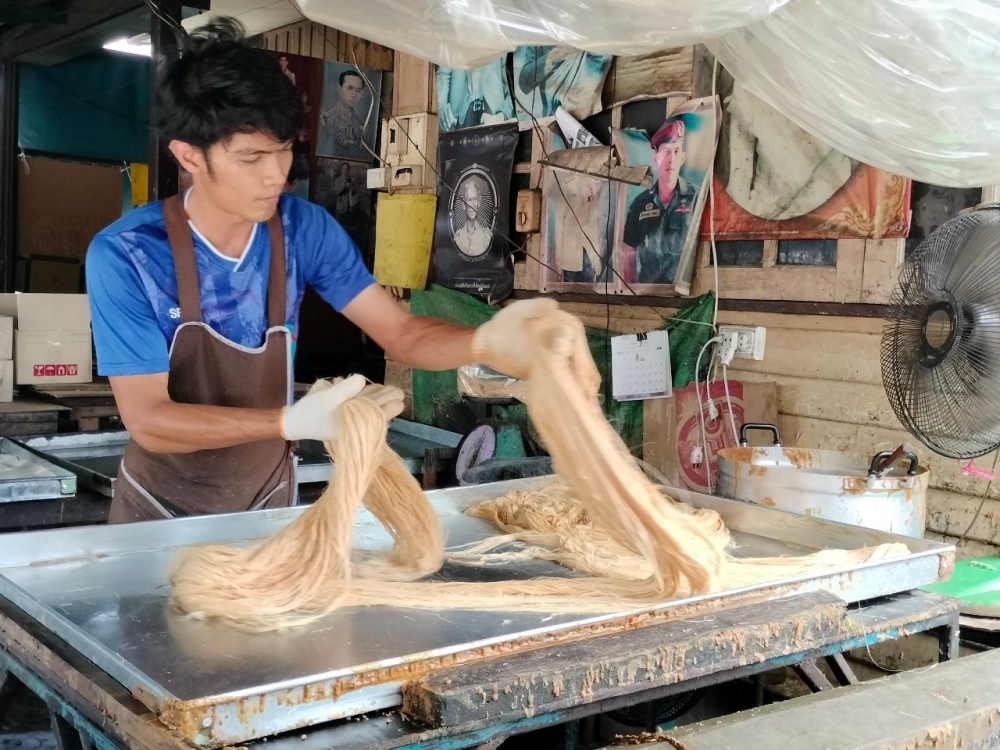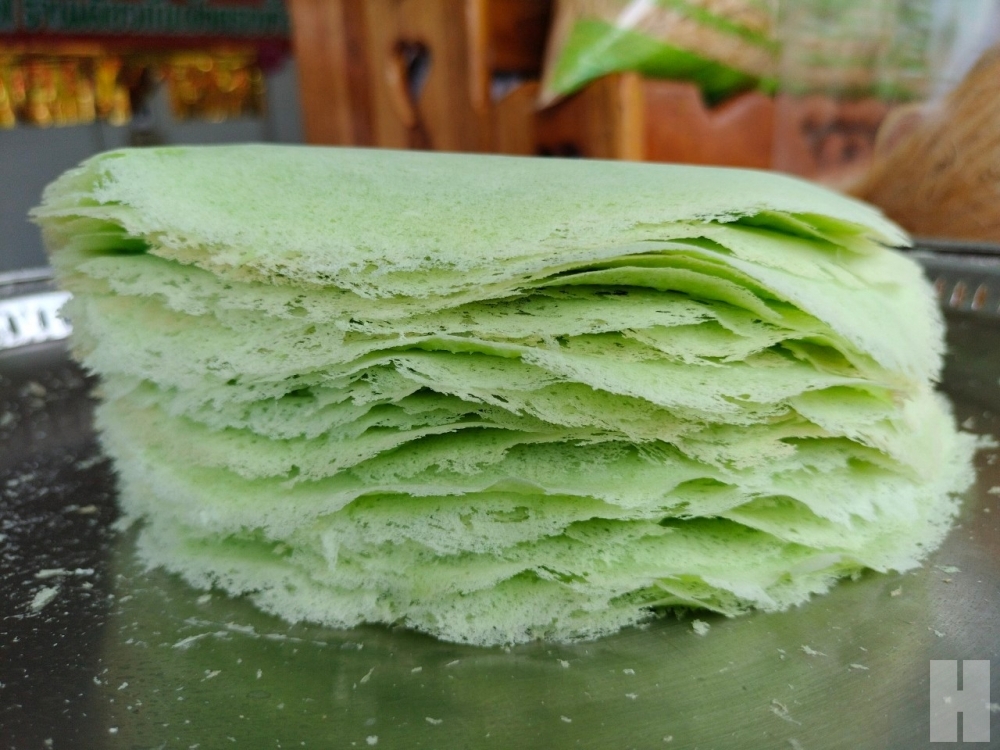History, Heritage, and Floss: Unwrapping Ayutthaya’s Beloved Roti Sai Mai
Travelers approaching Ayutthaya will easily spot rows of roadside stalls offering roti sai mai, luring passersby with their vibrant displays and tempting aromas.
 At one of these stalls, Pa Wan, a seasoned vendor with over 30 years of experience, shares a smile as a curious traveler pulls out their phone to snap photos of her expertly making the thin roti wrap. “Making roti is easy,” she says with a laugh, though she admits that for a beginner, it can take a few days and plenty of patience to get it just right.
At one of these stalls, Pa Wan, a seasoned vendor with over 30 years of experience, shares a smile as a curious traveler pulls out their phone to snap photos of her expertly making the thin roti wrap. “Making roti is easy,” she says with a laugh, though she admits that for a beginner, it can take a few days and plenty of patience to get it just right.
She demonstrates by swiftly dabbing pale green dough onto a flat, heated pan. In seconds, the dough cooks and is transferred to an aluminum tray to cool. Next to her, her cousin manages the trickier task of creating the sugar floss, or sai mai.
The process begins with boiling a sugar mixture until it reaches just the right consistency, then cooling it rapidly by submerging the pot in cold water. Once cooled, the caramel is poured onto a tray and stretched repeatedly by hand into delicate strands—a mesmerizing task for visitors to watch.
 The Origins of Roti Sai Mai
The Origins of Roti Sai Mai
The origins of roti sai mai trace back around 60 years to a Muslim man named Bang Pia (Salem Saengarun). Traditionally, both Muslim and Indian communities in Thailand prepared thicker, bread-like rotis, while Chinese descendants created much thinner versions for spring rolls.
According to legend, Bang Pia discovered the signature sugar floss by accident. He initially made desserts that required thick caramel, but sometimes the leftover caramel would harden. To make it usable again, he tried stretching it repeatedly. This innovative technique produced soft, floss-like sugar threads. Instead of pairing it with thick roti, Bang Pia used a thinner wrap inspired by Chinese-style spring rolls, and roti sai mai was born.
The original version featured a white wrap with light brown floss, but over time, vendors began experimenting with new colors and flavors. Today, you can find floss in a variety of hues and tastes—from pandan green to strawberry pink, blueberry purple, and even durian yellow.
 A Must-Try Treat and Souvenir
A Must-Try Treat and Souvenir
Roti sai mai has become a must-buy souvenir for visitors to Ayutthaya. Vendors at the Historical Park, temples, and local markets sell sets of the treat, which tourists eagerly purchase to bring home to family and friends.
“Most of our customers are tourists,” says one vendor. “Locals usually buy small sets, but visitors often take several sets home to share.”
Although the snack may look similar at different stalls, connoisseurs know the difference. A perfect roti wrap should strike the right balance—not too thick, not too thin, and slightly stretchy. The floss, too, plays a crucial role; it needs to be fine and soft to create that signature melt-in-the-mouth experience. If the threads are too coarse, the texture can be unpleasant.
A Sweet End to Your Ayutthaya Journey
As the long weekend draws to a close, a stop in Ayutthaya for some roti sai mai makes for a delightful way to break up the journey back to Bangkok. Whether enjoyed on the spot or packed as a gift, this sweet treat offers a delicious reminder of your visit to one of Thailand’s most treasured cities.
Make sure to grab a few extra sets—you might find it hard to resist eating them all before you get home!










